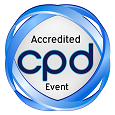
Carol Chamley
Coventry University, UK
Title: Leading -edge Realism Across Pedagogical Boundaries: Transforming Learning through Augmented Reality for Professional Practice in Contemporary Paediatric Orthopaedic and Trauma Care
Biography
Biography: Carol Chamley
Abstract
Paediatric orthopaedics is a highly specialized and distinctive field of paediatric practice. This contemporary module aimed to evaluate critically, evidence-based care and management associated with paediatric orthopaedic and traumatic conditions, including rehabilitation and future –focused transitional care. Developed collaboratively with senior clinicians, nurses, academics and learning technologists this innovative module sought to deliver high quality professional evidence-based education. The pedagogical strategy proposed to blend traditional teaching approaches with up-to-date and leading edge technology which actively and rapidly engaged students, whereby learning is enhanced in real-time, promptly immersing students with deeper involvement in situated learning experiences. Therefore first generation users have been introduced to ‘Augmented Reality’ during the delivery of this post registration Paediatric Orthopaedic and Trauma Module. Augmented Reality was co-constructed collaboratively as a pedagogical strategy which reflects a direct or indirect view of a physical real-world environment mediated through the use of mobile technology. Visual elements were augmented by computer, generating sensory inputs aiming to enrich learning through real-world visualization and understanding of related paediatric trauma and orthopaedic conditions such as musculo-skeletal anatomy, blood flow, fractures and images. By ‘tapping’ hot spots’ on manikin images these could be manipulated to zoom in or rotate, coupled with associated video clips, MCQ and text, all of which strengthen and deepen learning for clinical practice. In essence Augmented Reality provided rich details normally hidden in one dimensional images or text and by crafting existing images and blending new information thus reflecting ‘leading edge realism techniques’. Furthermore in-virtuo learning prepares students/practitioners for professional life whereby they can be exposed to quite complex learning and skills safely.

